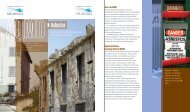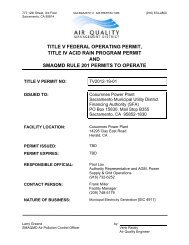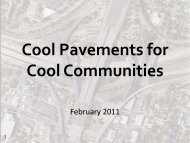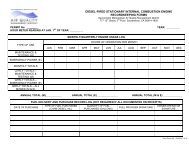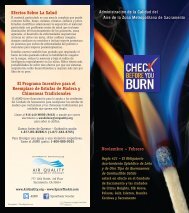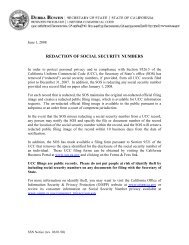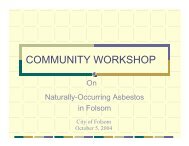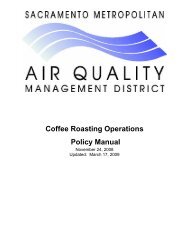Automotive Refinishing Policy Manual - Sacramento Metropolitan Air ...
Automotive Refinishing Policy Manual - Sacramento Metropolitan Air ...
Automotive Refinishing Policy Manual - Sacramento Metropolitan Air ...
Create successful ePaper yourself
Turn your PDF publications into a flip-book with our unique Google optimized e-Paper software.
2. State Requirementsa. California Health & Safety Code, Part 6 (commencing with section 44300) -- <strong>Air</strong> Toxics "HotSpots Information and Assessment Act of 1987:Facilities subject to this requirement must identify and quantify emissions of toxic aircontaminants. Facilities posing a potential health risk to the public must prepare a health riskassessment and if required, notify the public and implement a risk reduction plan.b. California Health & Safety Code §42301.6 -- Permit Approval: Powers & Duties of APCO:Prior to approving an application for a permit to construct or modify a source which emitshazardous air pollutants, which source is located within 1,000 feet from a school site, theDistrict must prepare a public notice. The notice must be sent to parent or guardians ofchildren enrolled in any school located within 1/4 mile of the source and to each addresswithin a radius of 1,000 feet of the source at least 30 days prior to taking final action on theapplication.In addition, Coating Operations locating within 1,000 feet from a school may be required toreduce hazardous air pollutant emissions and their associated health risk to the maximumextent deemed practicable. This may include, but is not limited to, emissions limitations,stack height requirements, hours of operation restrictions, and add-on control devices.c. California Code of Regulations, Title 17, Section 93112. Hexavalent Chromium and Cadmium<strong>Air</strong>borne Toxic Control Measure (ATCM) -- Motor Vehicle and Mobile Equipment Coatings:This <strong>Air</strong>borne Toxic Control Measure prohibits the use of hexavalent chromium and cadmiumin coatings used for motor vehicles and mobile equipment.3. Federal Requirementsa. 40 CFR PART 52.21 Prevention of Significant Deterioration of <strong>Air</strong> Quality (PSD): A source ormodification triggers PSD if: Its potential to emit any one pollutant is greater than 100 tons/year (if one of the 28selected industrial categories, including utility plants, steel plants, refineries, boilers>250 MMBtu/hr heat inpit) or greater tthan 250 tons/year (all other categories). And The project’s contemporaneous emissions increase and net emissions increase forany pollutant is greater than the significance levels listed below:PollutantLevel of Significance (Tons/Yr)CO 100NOx 40SOx 40PM 25PM10 15PM2.510 (PM2.5) or 40 (SO2) or 40 (NO)Ozone40 of NOx or VOCsLead 0.6Flourides 3Sulfuric acid mist 7H 2 S 10Total reduced sulfur (including H 2 S) 10Reduced sulfur compounds (including H 2 S) 10Greenhouse Gases (CO2e) 75,000b. 40 CFR Part 63, subpart IIII, National Emission Standards for Hazardous <strong>Air</strong> Pollutants:Surface Coating of Automobiles and Light-Duty Trucks: This NESHAP applies to automobileand light-duty truck finishing operations located at or is part of a major source. A majorsource of HAP emissions is defined as a stationary source or group of stationary sourceslocated within a contiguous area and under common control that emits or has the potential toemit 10 tons or more per year of any single HAP or 25 tons per year of any combination ofHAPs.VI-4






